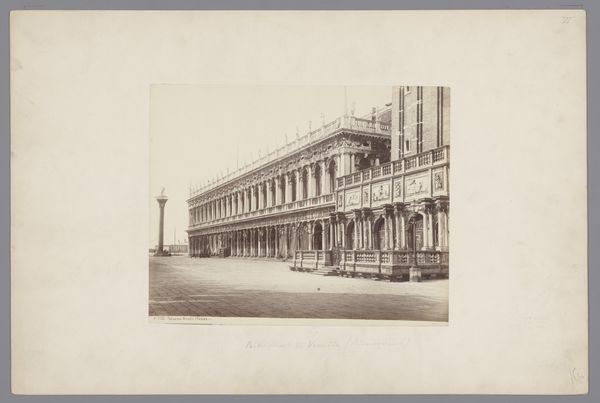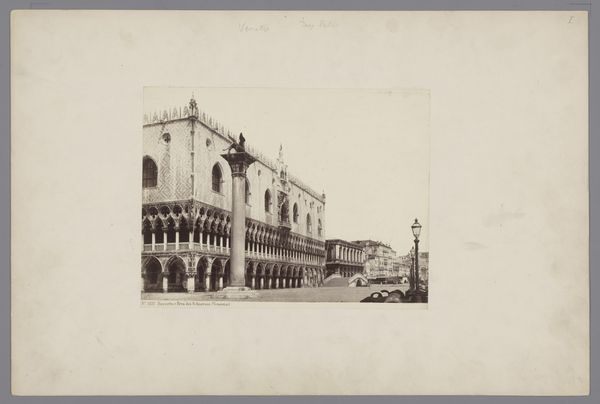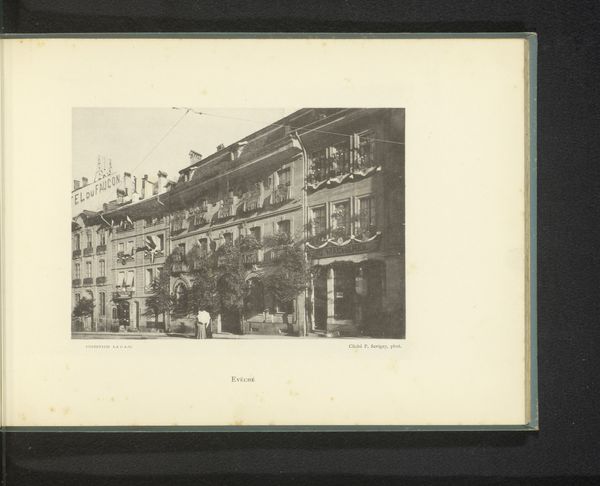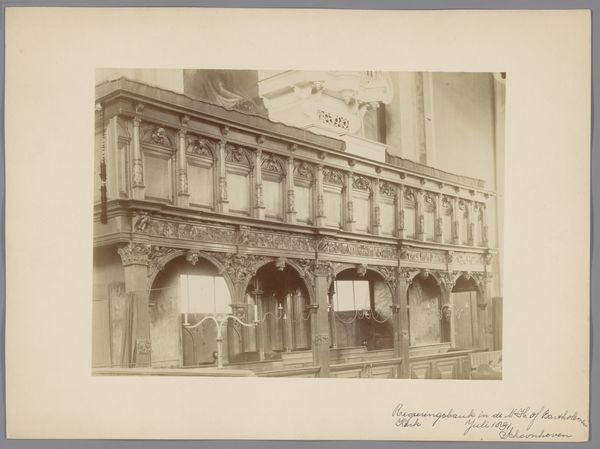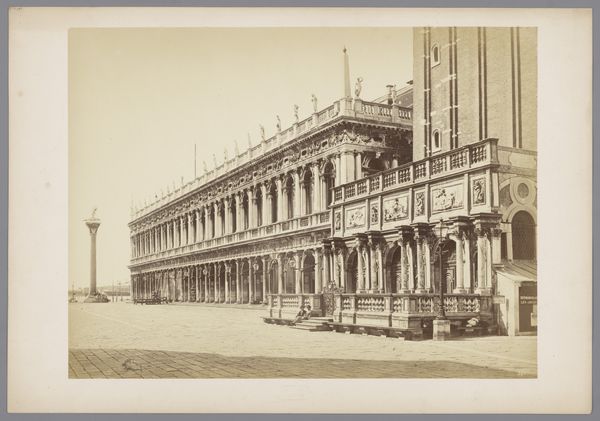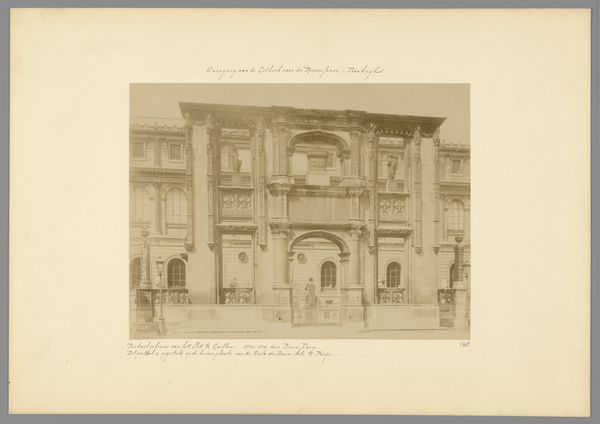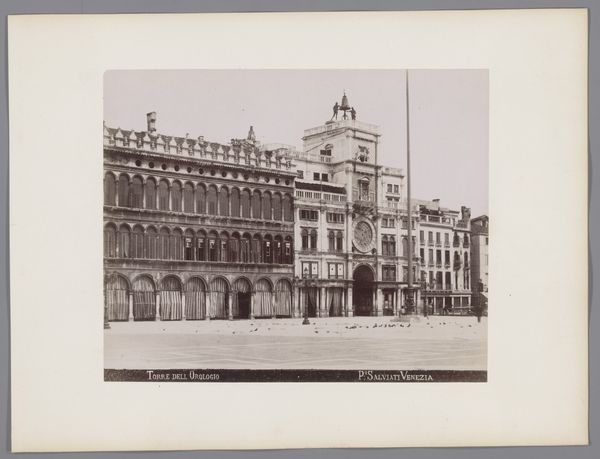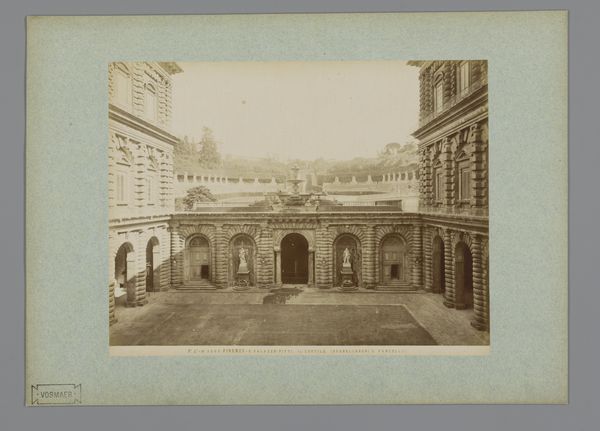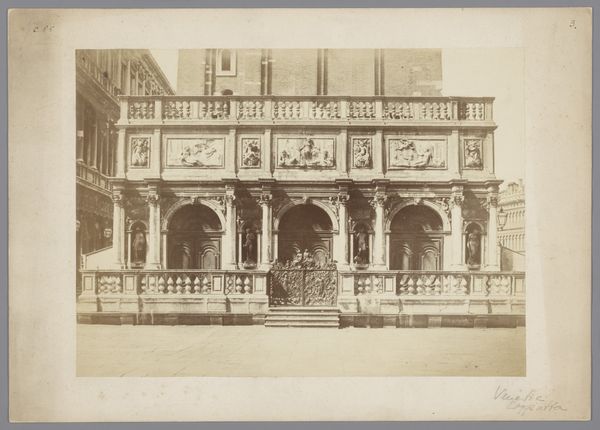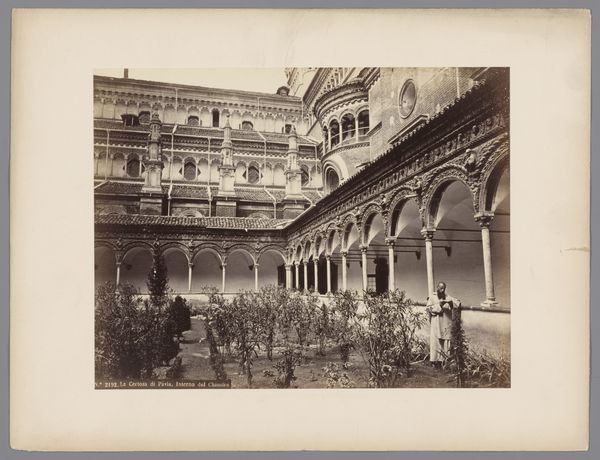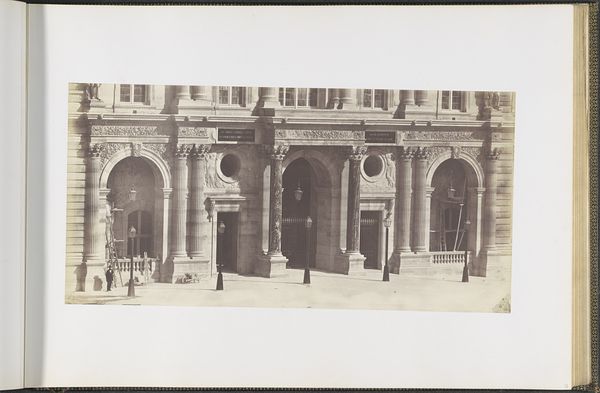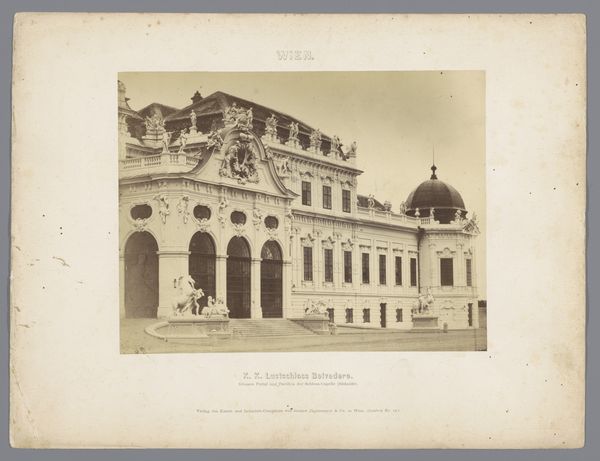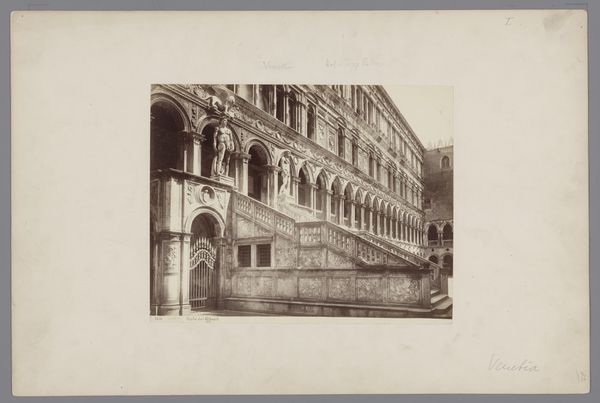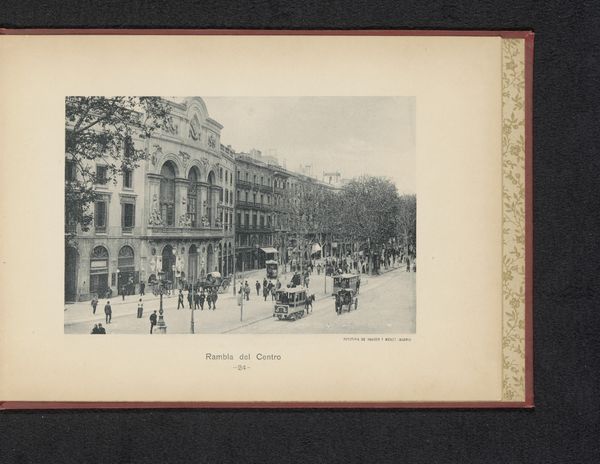
print, photography, collotype, architecture
# print
#
landscape
#
photography
#
collotype
#
architecture
#
realism
Dimensions: height 211 mm, width 273 mm
Copyright: Rijks Museum: Open Domain
Curator: Upon first viewing Étienne Neurdein’s collotype print, dating circa 1875 to 1900, depicting the Courtyard of Pierrefonds Castle, one immediately feels the weight of history pressing down. Editor: It has a certain austerity, doesn't it? The light, or lack thereof, gives it a muted tone, almost sepulchral, and enhances the impression of cold stone. The composition is almost oppressively formal; I'm curious about the visual symbolism at play here. Curator: It certainly begs questions about representation and power, given the loaded history of castles as symbols of feudal control. Looking closer at the details, it strikes me how Neurdein highlights architectural features and the absence of people; this void, almost staged, invites interpretations concerning whose narratives are—or are not—visible. Editor: Indeed. The symbols of power are muted, and are, in essence, about power itself. Each arch and pointed spire resonates with symbolic significance; perhaps Neurdein sought to distill the raw cultural potency inherent in such architectural forms. What emotions do the meticulously laid bricks and ordered structures elicit within us as modern viewers? Is it perhaps reverence mixed with an unnerving distance? Curator: That sense of distance you pinpoint is vital; consider who historically occupied or commissioned this kind of portrait. Wealth and exclusivity were invariably associated with images portraying such grandeur, effectively marginalizing wider socio-political voices. It urges us to rethink what 'public space' really signifies when encoded with visible assertions of authority. Editor: I agree, the absence of life within that structured landscape tells a tale. I see here echoes of northern European Renaissance sensibilities: that love of line and controlled space as representative of a kind of elevated humanity that transcends simple experience. So we contemplate the symbolism inherent to European constructions—their enduring implications. Curator: In sum, reflecting on Neurdein's castle, we unpack layered meanings: socio-political exclusions, architectural privilege. It invites ongoing engagement questioning what societal legacies get monumentalized through image-making itself. Editor: A powerful and somber vision! I depart with a revived interest in deconstructing monuments and revealing obscured dimensions that architecture carries over eras, thus better navigating history's complex landscapes.
Comments
No comments
Be the first to comment and join the conversation on the ultimate creative platform.
